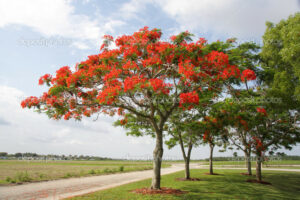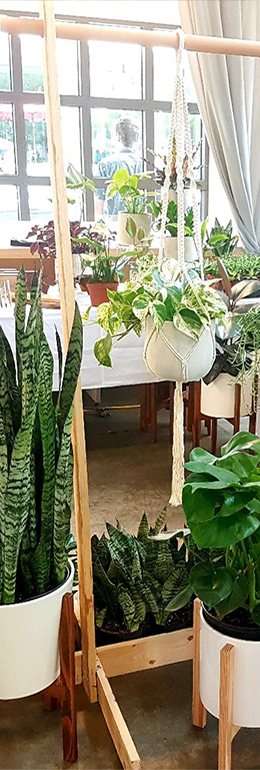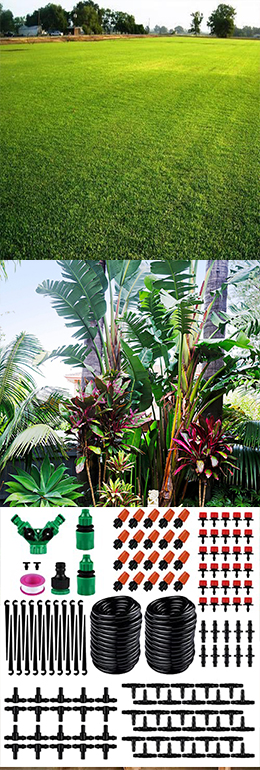Planting Instructions for Royal Poinciana
The royal poinciana tree also called a flame, gulmohar or flamboyant tree because of its flame-colored flowers, is a native of Madagascar that grows in U.S. Department of Agriculture plant hardiness zones 9b through 12. The tree grows about 5 feet a year until it reaches its full height of about 40 feet, with a 60-foot canopy spread. The leaves look similar to fern fronds, and the tree is covered in 3- to 4-inch-wide red-orange blooms in the spring and summer. Below is some useful gulmohar tree information to ensure they grow and thrive.
Poinciana Tree Instructions Location
The royal poinciana tree needs a frost-free location and full sun. Planting on the south side of buildings can help keep the tree warmer in areas that get occasional cold weather. Keep the tree at least 10 feet from structures and paved areas as the roots are shallow and spreading and can cause damage. Strong winds can harm the tree, so planting near a windbreak is ideal. Royal poincianas are drought-tolerant but have a low salt tolerance and need good drainage.

Ideal Soil Conditions Instructions Poinciana
Proper soil conditions for good poinciana growth are wide. Royal poincianas will grow in clay, loam, sandy and gravelly soil, as long as there is good drainage. The pH can also vary from alkaline to acidic. Tilling a layer of peat moss or compost into the top 4 to 6 inches of soil will help break up clay soil for better drainage and air circulation or add moisture retention to sandy soil. Dig a hole as deep and two to four times as wide as the root ball. Gently spread the roots out in the hole. Back-fill until the roots are covered. Water the tree and fill in more soil if needed.
Water and Fertilizer Poinciana
Royal poincianas need watering frequently when they are young. Once they are established they will need to be watered only during drought conditions. Water deeply about twice a week. Allow the top inch of soil to dry out before watering again. More frequent watering may be necessary in hot weather, with less watering in cool weather. Fertilize trees with a balanced slow-release fertilizer three to four times a year for the first three years, starting three to six weeks after planting. Reduce to once or twice per year for the next two years. Mature trees should not need to be fertilized. If the tree is planted in a fertilized lawn the lawn fertilizer may be sufficient.
Gulmohar Tree Information: Pruning
The branches of a royal poinciana tree are soft wood that is prone to breakage. Pruning the trees to eliminate weak limbs will help keep the tree healthy. Prune before new growth occurs in the spring. Cut back the largest limbs so they do not grow to more than half the diameter of the trunk. Dead branches and branches that grow at less than a 45-degree angle with the trunk or grow vertically should be removed. Pruning when the tree is young helps build a stronger structure.

 العربية
العربية


